One of the more curious aspects of Irish history is, in my opinion, the fact that this small island nation has such a wonderful, dense, ambivalent, and proud history. If anything, the Irish people’s history is one of defiance against all odds—by which I mean the Anglo-British empire’s might—, one of desperate pride and consciously standing up for one’s country (cue the Easter Rising), and never giving up.
It’s also one of the sadder instances of history in more recent years as Ireland—much like the other European nations—are flooded by masses of immigrants whose appeasement is poised to overturn the historical and ethnolinguistic make-up of the populations of the Emerald Island.
Given these notions, I do sense a certain extraordinary amount of nostalgia when going through these—and all the other—postcards from the 20th century, for they do show, above all, a world that is virtually ceasing to exist before our eyes, if it hasn’t vanished altogether already.
That said, here is a link to part one just in case:
And now on to the countryside!
St. Kevin’s in Glendalough
From the above postcard’s reverse:
Here in the sixth century, St. Kevin founded a monastery from which grew the monastic city of Glendalough which became one of the most renowned centres of learning in Europe. Today, the ruins, still eloquent of the former glory of the place, make Glendalough one of the most interesting of Ireland’s historic sites. The round tower at Glendalough is about 110 ft. high and 52 fl. in circumference at the base, and it is still in an excellent state of preservation.
And here’s a second postcard showing St. Kevin’s Church:
From that postcard’s reverse:
Glendalough (the valley of the two lakes) with its hallowed thousand-year-old ruins is where St. Kevin established a monastery in the sixth century which grew into one of Europe’s foremost centres of learning, and the ruins of the “city” are scattered about the shores of the two lakes which give it its name. St. Kevin’s Church (known also as St. Kevin’s Kitchen) is notable high-pitched stone roof. The Round Tower was common to most Irish Early Christian sites.
Southern Ireland
Speaking of traditional round towers, behold this sight:
Ardmore. A quiet family seaside resort on the coast of south-east Ireland. Dominating the landscape, and overlooking the beautiful Ardmore Bay is an almost perfect example of Round Tower, 97 feet in height. These towers are generally from the 9th century, and were erected near monastic and other ecclesiastical establishments to serve as watch towers, belfries, and sometimes storehouses. A unique feature of all these towers is that the entrance is situated some distance above ground level. Inside, the various levels were reached by ladders.
Let’s move on to the “Ring of Kerry”, shall we?
The “Ring of Kerry” and Killarney
The Ivaregh Peninsula stretches south-west for approx. 36 miles and has an average width of 15 miles. It contains some of the finest mountains in Ireland and the coastal strip around the peninsula carries the famous “Ring of Kerry” road. A tour of this road to Killarney offers a magnificent panorama of Kerry’s most outstanding scenery and extends for over 90 miles.
From the above postcard’s reverse:
Derrynane Harbour, backed by Cahernageeha Mountain, is situated on the south-west of the Ring of Kerry. There is, in the vicinity the curious hermitage of St. Crohane, hewn out of solid rock, and about a mile away an ancient stone fort, smaller, but similar in construction to the Staigue Fort. From the road, the well-wooded demesne of Derrynane, with Derrynane House may be seen. Among the trees, quite close to the house, are the ruins of Derrynane Abbey.
And, at the end of this long posting, we reach Killarney:
The lakes and Fells of Killarney lie along a broad valley running the highest mountains in Ireland and are surrounded by luxuriant woods. Every feature of the district, lakes, cascades, islands, castles and abbeys is associated with some legend of the past, and nobody can recount the tales as vividly and witty as the jarveys who drive the jaunting cars of sight-seeing trips.
Thus concludes today’s posting, and in the final instalment, we shall move north along the western coast of Ireland.




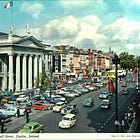
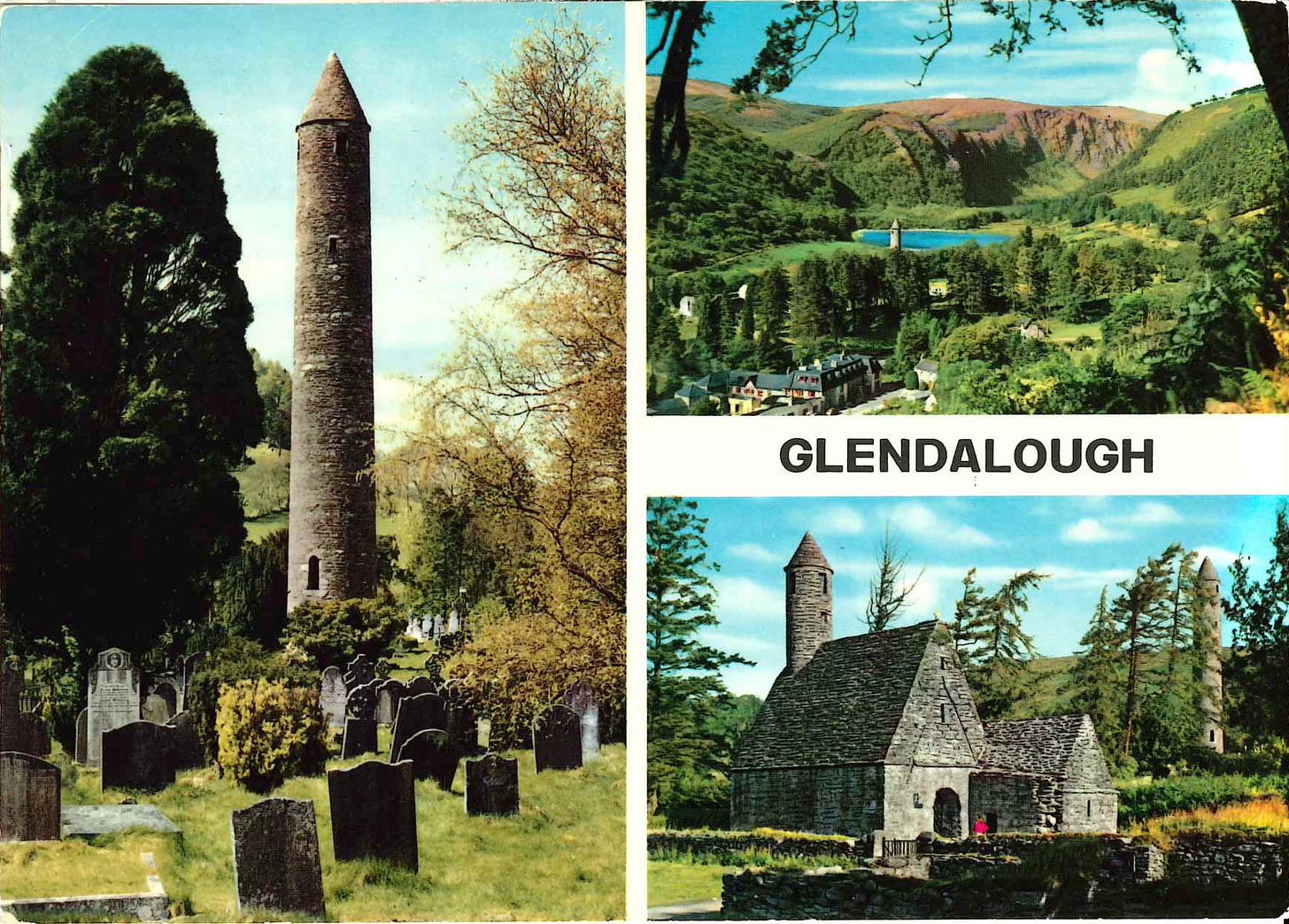


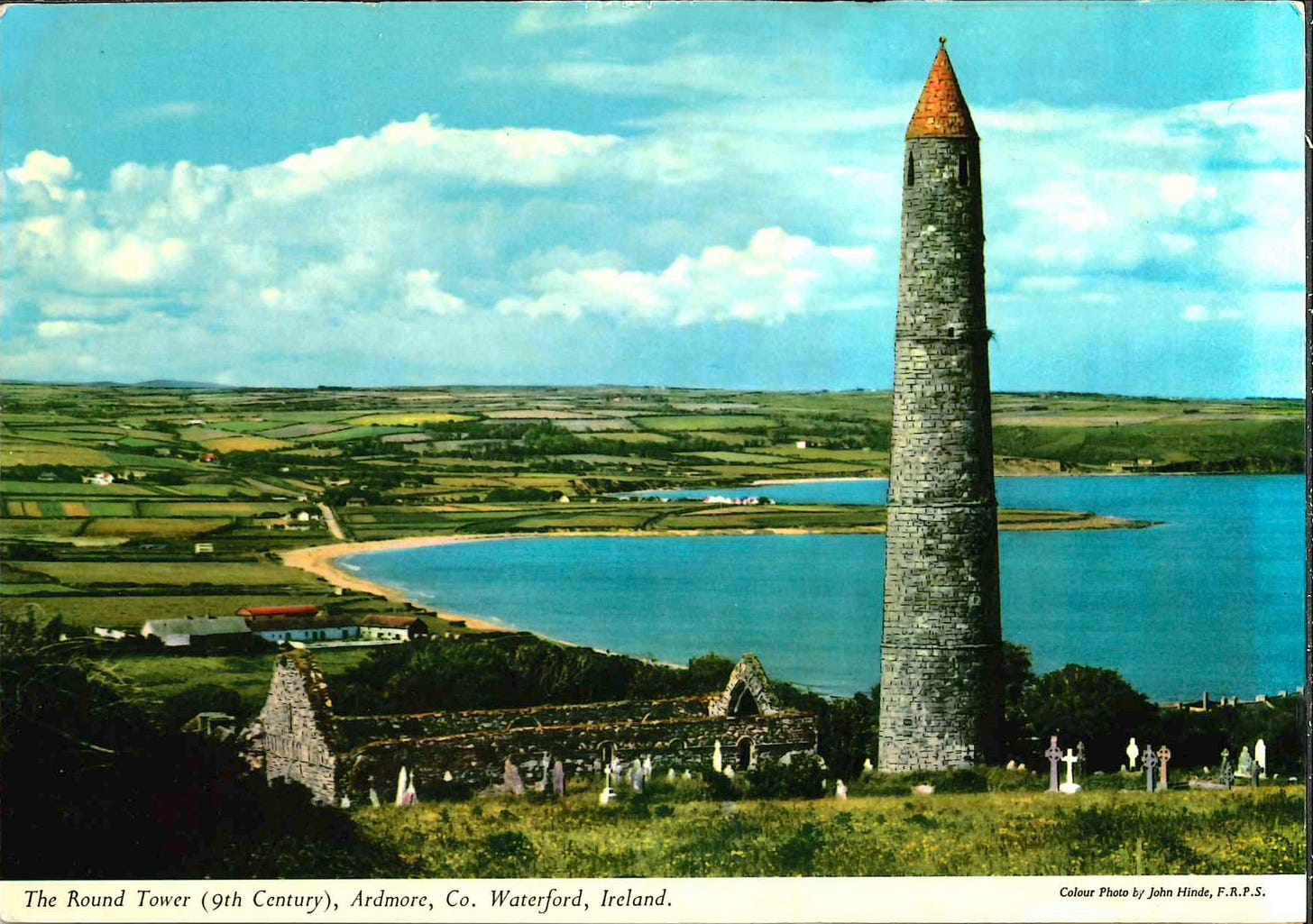
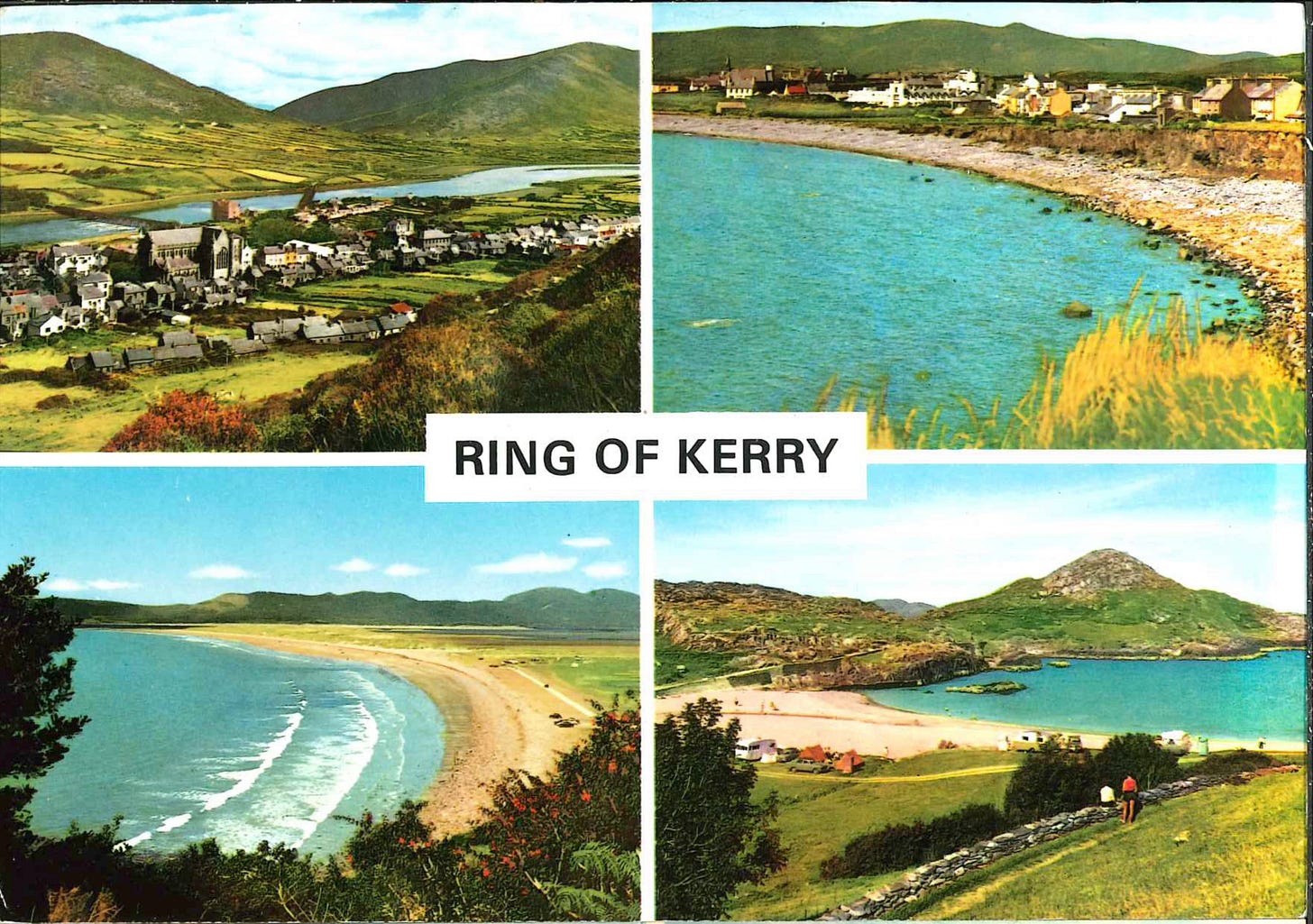
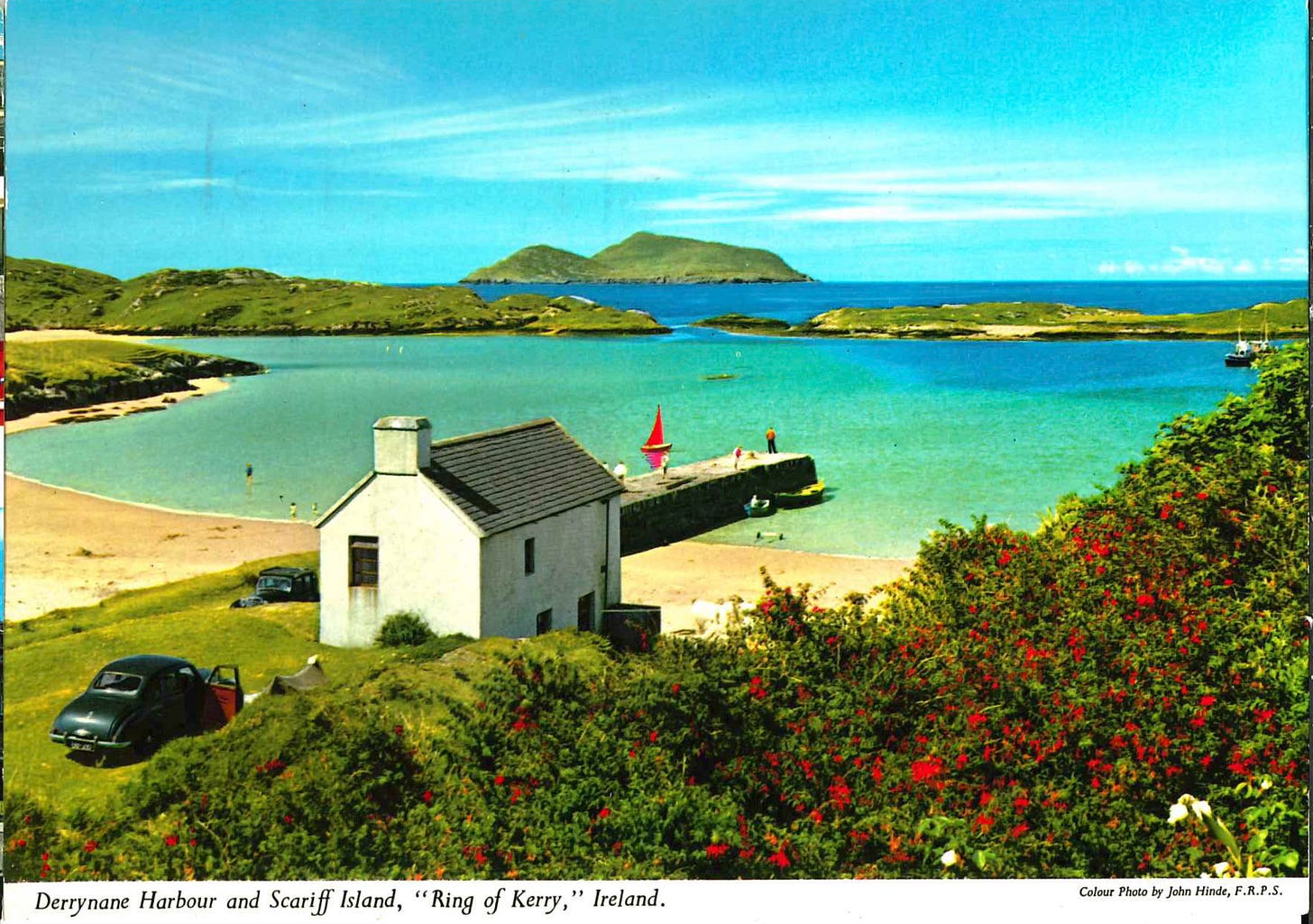

I’m not too far from Glendalough. The reason the entrances to the Round Towers were elevated was that in case of attack (pesky Viking’s and such) is that the monks could climb the ladder and draw it up behind them whilst the place was ransacked.
Ireland is a beautiful place. My daughter-in-law took her first trip-anywhere-to Ireland in 2016 or so. She loved it